You are using an out of date browser. It may not display this or other websites correctly.
You should upgrade or use an alternative browser.
You should upgrade or use an alternative browser.
Mead - the homebrew thread
- Thread starter quirkzoo1
- Start date

Help Support Homebrew Talk:
This site may earn a commission from merchant affiliate
links, including eBay, Amazon, and others.
axeman91821
Well-Known Member
- Joined
- Apr 5, 2013
- Messages
- 3,924
- Reaction score
- 7,432
Man, 71B really is a beast. Took my cyser down from 1.114 to 1.002
jvanaus
Well-Known Member
Man, 71B really is a beast. Took my cyser down from 1.114 to 1.002
How long was the fermentation and what nutrients / schedule did you do? I have a cyser fermented with 71B as well that's pretty clear and I think pretty close to being "done" so I'm currently bulk aging.
Need to get some readings soon so I can see how it's fallen and how much I might want to backsweeten.
axeman91821
Well-Known Member
- Joined
- Apr 5, 2013
- Messages
- 3,924
- Reaction score
- 7,432
How long was the fermentation and what nutrients / schedule did you do? I have a cyser fermented with 71B as well that's pretty clear and I think pretty close to being "done" so I'm currently bulk aging.
Need to get some readings soon so I can see how it's fallen and how much I might want to backsweeten.
Made/pitched this batch sometime in late August. Was down at 1.008 on October 1st, which I thought it was done at that point. Took another reading while getting ready to rack to secondary with some vanilla and cinnamon last night and it was down to 1.002. Good thing I checked as I ended up increasing the amount of honey I used to backsweeten. I used Fermaid-O in additions at 1, 2, 3, and 7 days, degassing twice a day for the first week.
mjohnson171
Well-Known Member
More homemade mead porn needed.
MooseLang
Well-Known Member
I'm on my phone, so I can't catch up on 40 pages of Mead talk right now. I recently had my first Schramm's, and it blew my mind. Was thinking about making a Ginger mead.
- My local Amish Market has raw wildflower and Alfalfa honey for $30 per 5lb container. Is that a decent price? Are either of those varieties good for mead?
- How much honey do I need to make a 5 gallon batch?
- My local Amish Market has raw wildflower and Alfalfa honey for $30 per 5lb container. Is that a decent price? Are either of those varieties good for mead?
- How much honey do I need to make a 5 gallon batch?

$479.00
$559.00
EdgeStar KC1000SS Craft Brew Kegerator for 1/6 Barrel and Cornelius Kegs
Amazon.com

$719.00
$799.00
EdgeStar KC2000TWIN Full Size Dual Tap Kegerator & Draft Beer Dispenser - Black
Amazon.com

$10.99 ($31.16 / Ounce)
Hornindal Kveik Yeast for Homebrewing - Mead, Cider, Wine, Beer - 10g Packet - Saccharomyces Cerevisiae - Sold by Shadowhive.com
Shadowhive

$20.94
$29.99
The Brew Your Own Big Book of Clone Recipes: Featuring 300 Homebrew Recipes from Your Favorite Breweries
Amazon.com

$176.97
1pc Commercial Keg Manifold 2" Tri Clamp,Ball Lock Tapping Head,Pressure Gauge/Adjustable PRV for Kegging,Fermentation Control
hanhanbaihuoxiaoshoudian

$22.00 ($623.23 / Ounce)
AMZLMPKNTW Ball Lock Sample Faucet 30cm Reinforced Silicone Hose Secondary Fermentation Homebrew Kegging joyful
无为中南商贸有限公司

$7.79 ($7.79 / Count)
Craft A Brew - LalBrew Voss™ - Kveik Ale Yeast - For Craft Lagers - Ingredients for Home Brewing - Beer Making Supplies - (1 Pack)
Craft a Brew

$53.24
1pc Hose Barb/MFL 1.5" Tri Clamp to Ball Lock Post Liquid Gas Homebrew Kegging Fermentation Parts Brewer Hardware SUS304(Liquid Hose Barb)
Guangshui Weilu You Trading Co., Ltd

$33.99 ($17.00 / Count)
$41.99 ($21.00 / Count)
2 Pack 1 Gallon Large Fermentation Jars with 3 Airlocks and 2 SCREW Lids(100% Airtight Heavy Duty Lid w Silicone) - Wide Mouth Glass Jars w Scale Mark - Pickle Jars for Sauerkraut, Sourdough Starter
Qianfenie Direct

$53.24
1pc Hose Barb/MFL 1.5" Tri Clamp to Ball Lock Post Liquid Gas Homebrew Kegging Fermentation Parts Brewer Hardware SUS304(Liquid Hose Barb)
yunchengshiyanhuqucuichendianzishangwuyouxiangongsi

$58.16
HUIZHUGS Brewing Equipment Keg Ball Lock Faucet 30cm Reinforced Silicone Hose Secondary Fermentation Homebrew Kegging Brewing Equipment
xiangshuizhenzhanglingfengshop
mjohnson171
Well-Known Member
$6/lb is on the high side for bulk of 5 or > lbs, especially for wildflower. Never bought alfalfa so that might be in line. Typically $4-5/lb is what you pay for “bulk” honey.I'm on my phone, so I can't catch up on 40 pages of Mead talk right now. I recently had my first Schramm's, and it blew my mind. Was thinking about making a Ginger mead.
- My local Amish Market has raw wildflower and Alfalfa honey for $30 per 5lb container. Is that a decent price? Are either of those varieties good for mead?
- How much honey do I need to make a 5 gallon batch?
Both would be good for a mead, however I’d think the alfalfa honey would be wasted on a fruited or ginger mead if that’s what you were looking to make.
MooseLang
Well-Known Member
$6/lb is on the high side for bulk of 5 or > lbs, especially for wildflower. Never bought alfalfa so that might be in line. Typically $4-5/lb is what you pay for “bulk” honey.
Both would be good for a mead, however I’d think the alfalfa honey would be wasted on a fruited or ginger mead if that’s what you were looking to make.
Thanks for the info! I will keep shopping around.
elkhunter36
Well-Known Member
Stealing ideas from bigk84 HOD clone recipe. I wanted to do this with all fresh fruit from Wisconsin. Everything is in season now.
10# fresh Door County Montmorency cherries
10# fresh Door County Raspberries
10# fresh Red Currants. We picked these ourselves
and 14# orange blossom honey
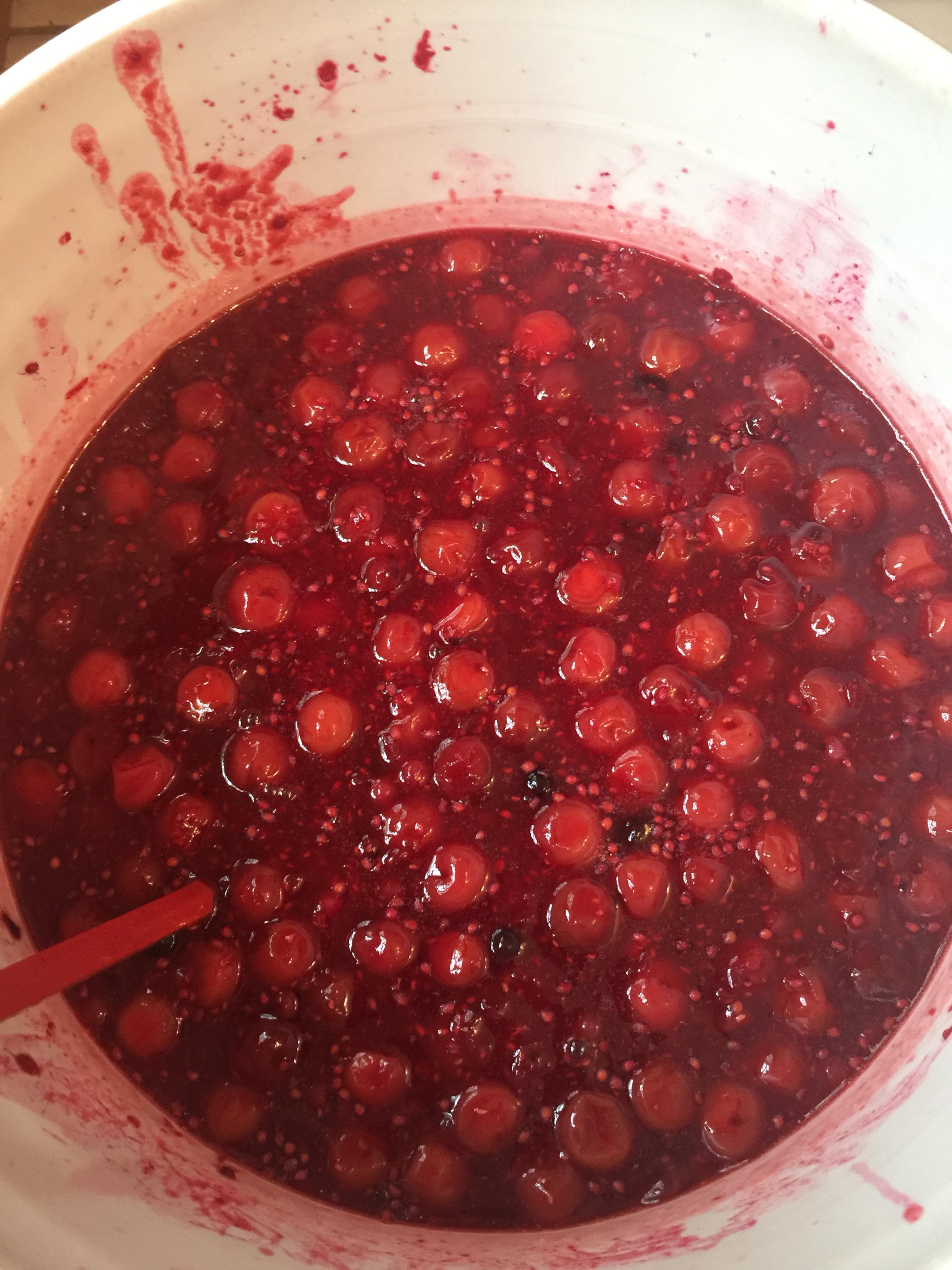
We will see how things turn out
Oh and we picked a few gooseberries, wife wanted to make a pie.
Bottled today. I am pretty pleased with the results. The Pyment should be bottled Sunday and I will post a pic.
Beerontwowheels
Well-Known Member
Update on my traditional - mixed it up on 8/3, 11 gallons split into two 6.5G carboys, both read out at 1.130 OG. Gravity samples so far have been:
8/06: 1.112 (2.4%)
8/08: 1.100 (4.0%)
8/12: 1.060 (9.5%)
Looking for at least another 30 points, and would be thrilled if the yeast quit at 1.026 (14%). Quick temp check before gravity reading shows the mead is chilling at 65° in my keezer/ferm chamber.
Took my first ever legit (not paper strips) pH reading today (MW102) and it revealed the mead is sitting at 3.27pH. Seems on par as research shows most meads finish fermentation somewhere between 3.0 - 3.2. Going to cross my fingers and hope my SNA regimen (Travis Blount Elliot schedule) keeps the yeast healthy enough to finish out.
Early impressions are that my split of 71B & D47 might not have been the best yeasts to ferment with since I was looking to retain some of the marshmallow/maple traits of the MeadowMaple honey. I kind of figured this but wanted to stick with yeasts I was familiar with given this honey wasn't cheap. Still...tastes great so far (fruitier than what I had in my head though) and I think it will taste great once it comes out of a barrel a few months down the road.
Found a 10g whiskey barrel today on the interwebz. Wasn't cheap, but at least the search is over (still some left @ midwestbarrelco.com, in case anyone is interested). Purchased this morning and already have tracking info.
Will pull a sample of the mead tonight (for science) and figure out what the hell I am doing with regards to fining/clarification. Any suggestions? Bentonite, SuperKleer, etc.? Haven't used finings before, hoping I don't have to. I guess I could coldcrash it...
mjohnson171
Well-Known Member
Personally i don't use any finings, just time and coldcrashing provide enough clarity. But if I were to put this in a barrel I wouldn't worry about clarifying it until after you dump it from the barrel.Found a 10g whiskey barrel today on the interwebz. Wasn't cheap, but at least the search is over (still some left @ midwestbarrelco.com, in case anyone is interested). Purchased this morning and already have tracking info.
Will pull a sample of the mead tonight (for science) and figure out what the hell I am doing with regards to fining/clarification. Any suggestions? Bentonite, SuperKleer, etc.? Haven't used finings before, hoping I don't have to. I guess I could coldcrash it...
Beerontwowheels
Well-Known Member
Makes sense. I don't really want to use any finings, so maybe a few weeks in the barrel and then rack to a keg for cold crashing, transfer to new keg for bottling. That'll do.Personally i don't use any finings, just time and coldcrashing provide enough clarity. But if I were to put this in a barrel I wouldn't worry about clarifying it until after you dump it from the barrel.
Bottled my first batch of mead yesterday. After the first fermentation I racked it into 2 different varieties: one dry mead and one with vanilla and raspberries. The dry mead is oxidized because I had too much headspace in my carboy (I tried adding marbles, but there were too few marbles). The vanilla/raspberry one came out pretty good, though I can't taste any vanilla in it 
elkhunter36
Well-Known Member
And today is pyment day. We ended up with 24 quarts of concord grape juice this year so making 2 batches, one with our usual Wisconsin white clover honey and one with orange blossom honey. Will be fun to try them side by side.
Bottled the pyment over the weekend. Both finished at 13.39%
elkhunter36
Well-Known Member
And now we experiment with cranberries.
I've got a few questions about adding sulfite and sorbate. I made my first batch of mead without adding any of those, based on the Schramm book recipe. Now I'm looking to make a second batch and I'm looking for a new recipe. I noticed that most of these recipes add sulfite and sorbate to the mead, with the goal to stabilize everything and avoid bottle bombs.
Now I am wondering a few things:
1) Is my first mead dangerous? Do I have a chance on exploding bottles? (I had a SG of 1.112 and had a FG of 1.002 going into secondary and three months later I bottles it with a FG of 1.002, so it was stable for two months in secondary even though I added raspberries in secondary).
2) How is it that Schramm doesn't use any sulfite in his meads, yet doesn't have any exploding bottles? What does he do to avoid it? I understand that, once the FG is stable normally the fermentation has stopped and the chance of exploding bottles is small, however there's always a small chance the fermentation will start again when there's lots of residual sugars.
Now I am wondering a few things:
1) Is my first mead dangerous? Do I have a chance on exploding bottles? (I had a SG of 1.112 and had a FG of 1.002 going into secondary and three months later I bottles it with a FG of 1.002, so it was stable for two months in secondary even though I added raspberries in secondary).
2) How is it that Schramm doesn't use any sulfite in his meads, yet doesn't have any exploding bottles? What does he do to avoid it? I understand that, once the FG is stable normally the fermentation has stopped and the chance of exploding bottles is small, however there's always a small chance the fermentation will start again when there's lots of residual sugars.
mjohnson171
Well-Known Member
I never use sorbate or sulfite either. I’m perscibe to The Book of Ken. And I’ve only ever had 2 meads carbonate in the Bottle. One was my fault because I added fresh lime juice at bottling (don’t introduce new sugars). The second was a cranberry mead that I was too impatient with and bottled a little too earlier. TBH that was a good mistake because I like the sparkling cranberry better than still.I've got a few questions about adding sulfite and sorbate. I made my first batch of mead without adding any of those, based on the Schramm book recipe. Now I'm looking to make a second batch and I'm looking for a new recipe. I noticed that most of these recipes add sulfite and sorbate to the mead, with the goal to stabilize everything and avoid bottle bombs.
Now I am wondering a few things:
1) Is my first mead dangerous? Do I have a chance on exploding bottles? (I had a SG of 1.112 and had a FG of 1.002 going into secondary and three months later I bottles it with a FG of 1.002, so it was stable for two months in secondary even though I added raspberries in secondary).
2) How is it that Schramm doesn't use any sulfite in his meads, yet doesn't have any exploding bottles? What does he do to avoid it? I understand that, once the FG is stable normally the fermentation has stopped and the chance of exploding bottles is small, however there's always a small chance the fermentation will start again when there's lots of residual sugars.
As far as will you have bottle bombs on hand, sounds like you should be safe. If your FG was 1.002 AND you moved it to secondary for another 2 months with no movement it sounds stable. However I am a little surprised that you added additional sugars in the form of raspberries in secondary and it still stayed at that. Did you notice any activity in the airlock after adding fruit? It’s possible you transferred at 1.002, added fruit to bump it up something higher, then it refermented down to 1.002 again. That would be a coincidence.
Whatever the case you’re probably fine. You might get some bubbly bottles, just keep an eye on them as open one every so often to track progress. If they’re still still after a month in the bottle then you’re safe.
mjohnson171
Well-Known Member
Did a lot of mead this weekend.
First up is a wild blueberry mead I made that ended up being a bit too tart. So to smooth it out I added maple syrup.
Then I transferred a massive mixed berry melomel.
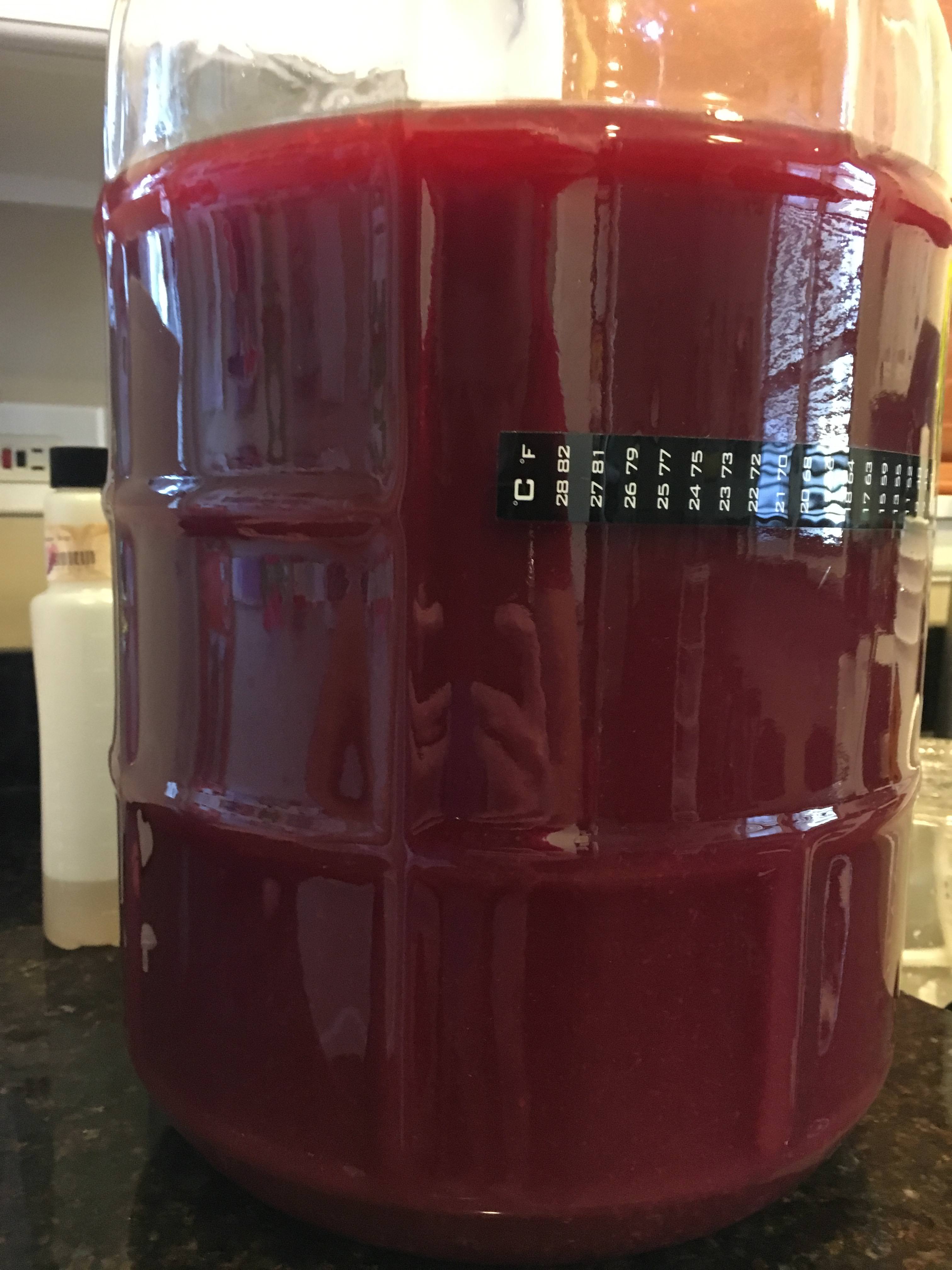
This was the settling after 24 hours.

Then hit a cherry melomel with some vanilla.
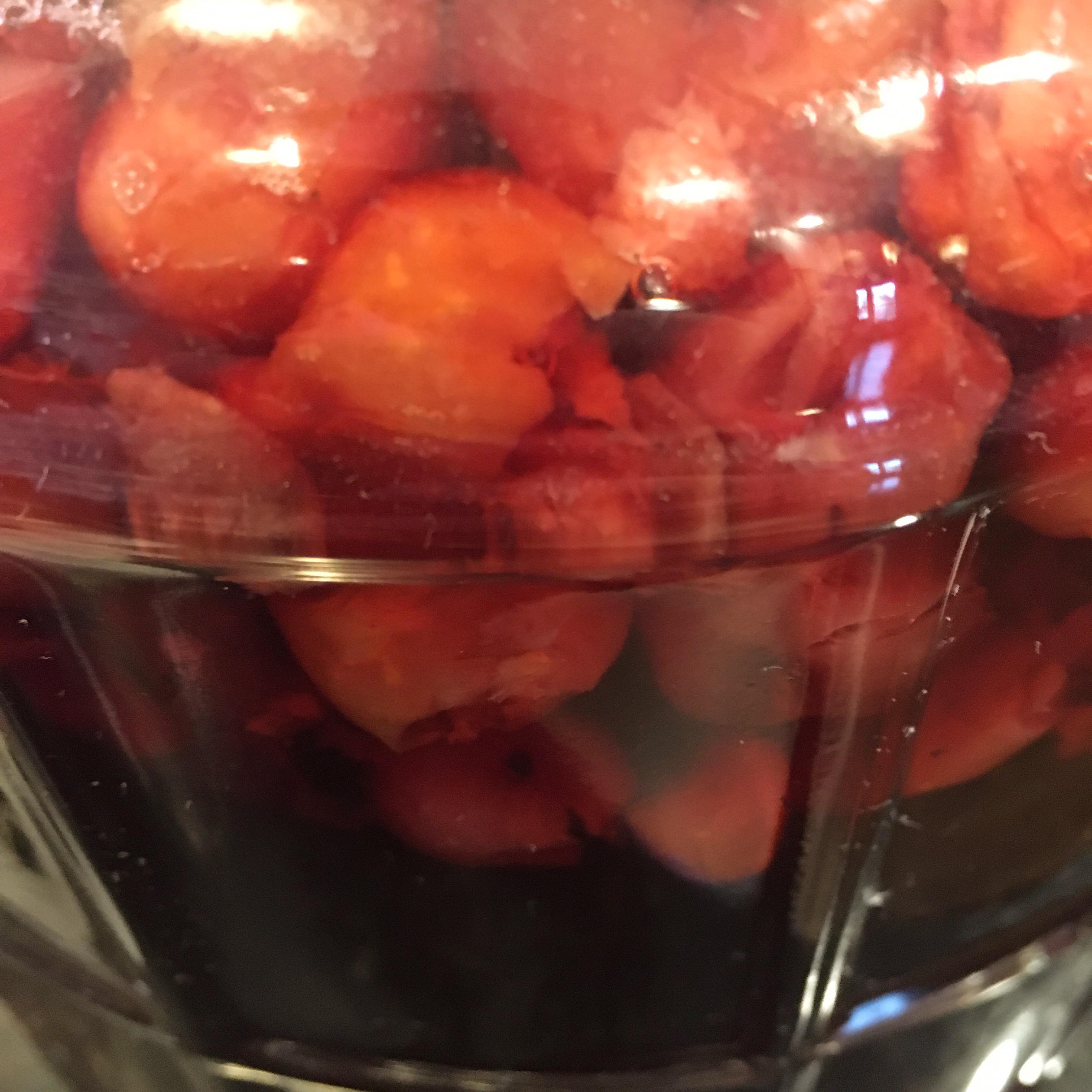
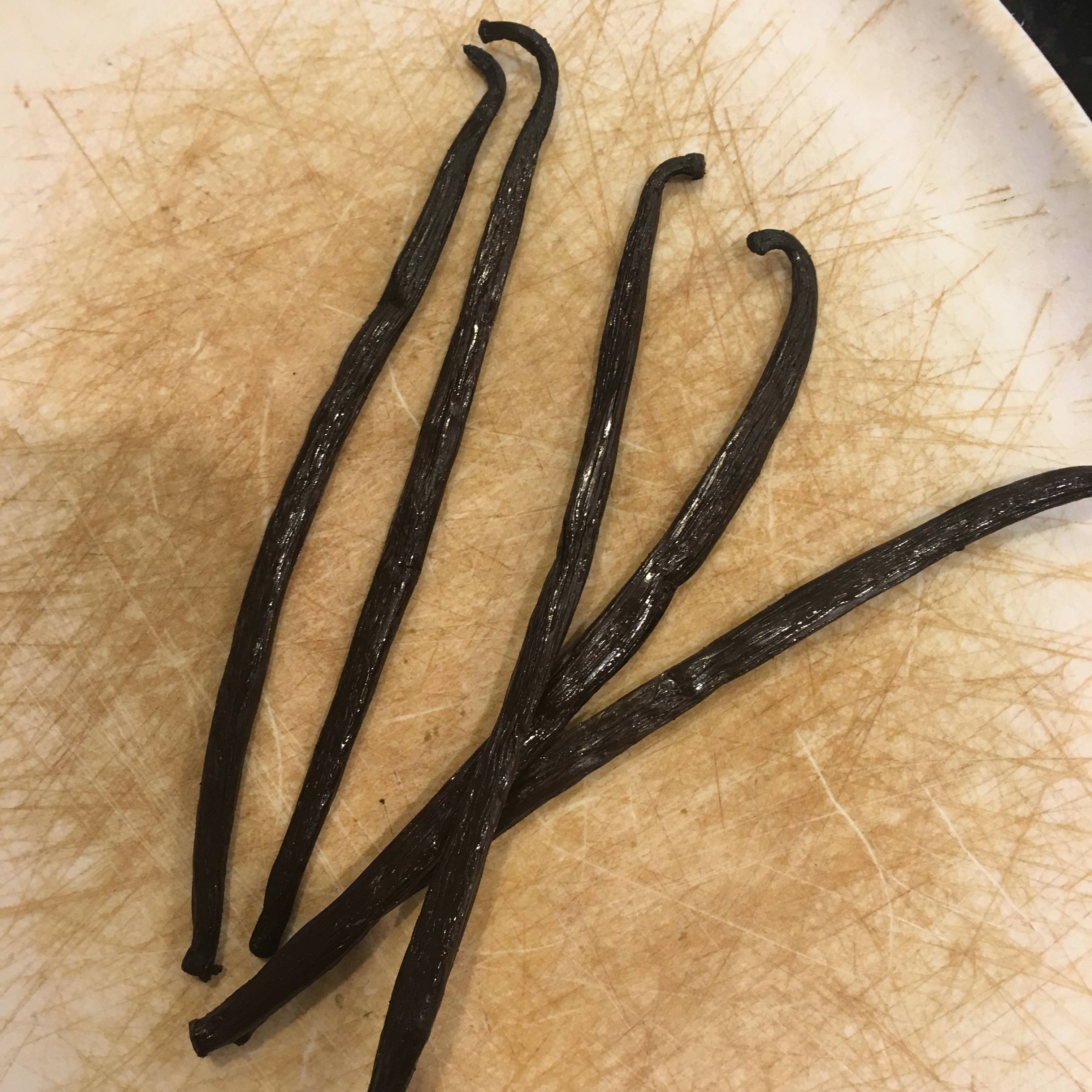
First up is a wild blueberry mead I made that ended up being a bit too tart. So to smooth it out I added maple syrup.
Then I transferred a massive mixed berry melomel.

This was the settling after 24 hours.

Then hit a cherry melomel with some vanilla.


However I am a little surprised that you added additional sugars in the form of raspberries in secondary and it still stayed at that. Did you notice any activity in the airlock after adding fruit? It’s possible you transferred at 1.002, added fruit to bump it up something higher, then it refermented down to 1.002 again. That would be a coincidence.
I did saw airlock activity for two weeks while in secondary, but it was slow. Maybe a bubble/2-3 minutes.
I must say I was surprised too when I saw that my FG was the same as before. Makes me wonder if I misread my hydrometer...
Thanks for the advice!
jvanaus
Well-Known Member
I've got a few questions about adding sulfite and sorbate. I made my first batch of mead without adding any of those, based on the Schramm book recipe. Now I'm looking to make a second batch and I'm looking for a new recipe. I noticed that most of these recipes add sulfite and sorbate to the mead, with the goal to stabilize everything and avoid bottle bombs.
Now I am wondering a few things:
1) Is my first mead dangerous? Do I have a chance on exploding bottles? (I had a SG of 1.112 and had a FG of 1.002 going into secondary and three months later I bottles it with a FG of 1.002, so it was stable for two months in secondary even though I added raspberries in secondary).
2) How is it that Schramm doesn't use any sulfite in his meads, yet doesn't have any exploding bottles? What does he do to avoid it? I understand that, once the FG is stable normally the fermentation has stopped and the chance of exploding bottles is small, however there's always a small chance the fermentation will start again when there's lots of residual sugars.
Based on my reading of Ken's book, the Schramm method relies on reaching the alcohol tolerance of the yeast so there's no need for sorbates or sulfites to halt fermentation or kill yeast.
If your mead was stable for that long, like mjohnson17 said, you're probably safe.
What did you use for closures? If corks, it's likely the cork will push up over the mouth of the bottle before bombs would happen. If caps, check to see if any bottles have carb on a schedule of a few weeks at a time. If all looks good, the mead is likely stable for the long haul.
That’s what I got from the book too, but it isn’t a very accurate method, right? And that is something that would surprise me with Schramm’s being a professional meadery. The chance of things going wrong is too big that way...
mjohnson171
Well-Known Member
This is my completely unsubstantiated thinking, but Schramms waits WAY longer than most meaderies to release their meads. As mentioned Ken goes all the way up to the alcohol tolerance of the yeast. That coupled with letting a mead sit in secondary or terciary for an additional 3,4,6 months (w/ no airlock or hydrometer activity) to naturally clear provides a relatively safe, but no foolproof, method to ensure no carbonation. In my experience of making mead for almost 5 years I’ve found the same thing. Leave a mead long enough and you’re safe. I’ve left a mead in terciary for over a year.That’s what I got from the book too, but it isn’t a very accurate method, right? And that is something that would surprise me with Schramm’s being a professional meadery. The chance of things going wrong is too big that way...
jwazzy
Well-Known Member
I made my first mead and didn't add sulfite or sorbate. I also didn't wait long enough to bottle. Incidentally I had bottled it in flip tops. I just burped the bottles and drank a gallon of mediocre mead much quicker than I had planned. This doesn't help at all but is my experience.
jvanaus
Well-Known Member
That’s what I got from the book too, but it isn’t a very accurate method, right? And that is something that would surprise me with Schramm’s being a professional meadery. The chance of things going wrong is too big that way...
This is my completely unsubstantiated thinking, but Schramms waits WAY longer than most meaderies to release their meads. As mentioned Ken goes all the way up to the alcohol tolerance of the yeast. That coupled with letting a mead sit in secondary or terciary for an additional 3,4,6 months (w/ no airlock or hydrometer activity) to naturally clear provides a relatively safe, but no foolproof, method to ensure no carbonation. In my experience of making mead for almost 5 years I’ve found the same thing. Leave a mead long enough and you’re safe. I’ve left a mead in terciary for over a year.
If memory serves, there have been a few instances of slightly carbed Schramm's bottles which had been replaced by the meadery if brought to their attention. Personally, I think having a slightly carbed bottle wouldn't be a bad thing, provided it wasn't going to explode at some point.
elkhunter36
Well-Known Member
Mead bottling / making day.
Bottled the experimental cranberry.
It went from this:

To this:
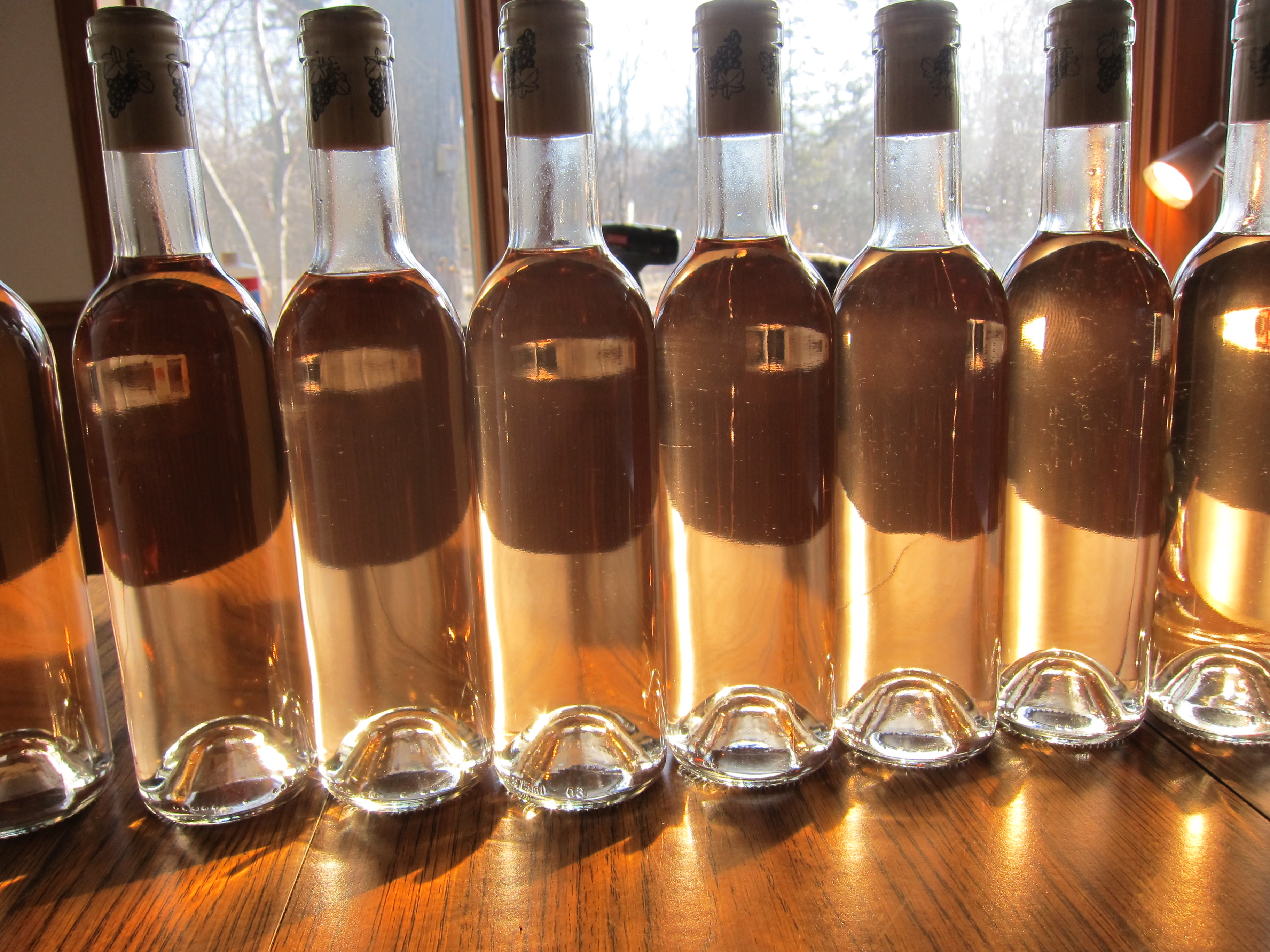
It's good but super dry. It will be fun to get some feedback on this one. I think it needs more cranberry.
Also when we picked fruit in August we had some extra so we froze them until we had some free time and fermenter space.
Blackberry:
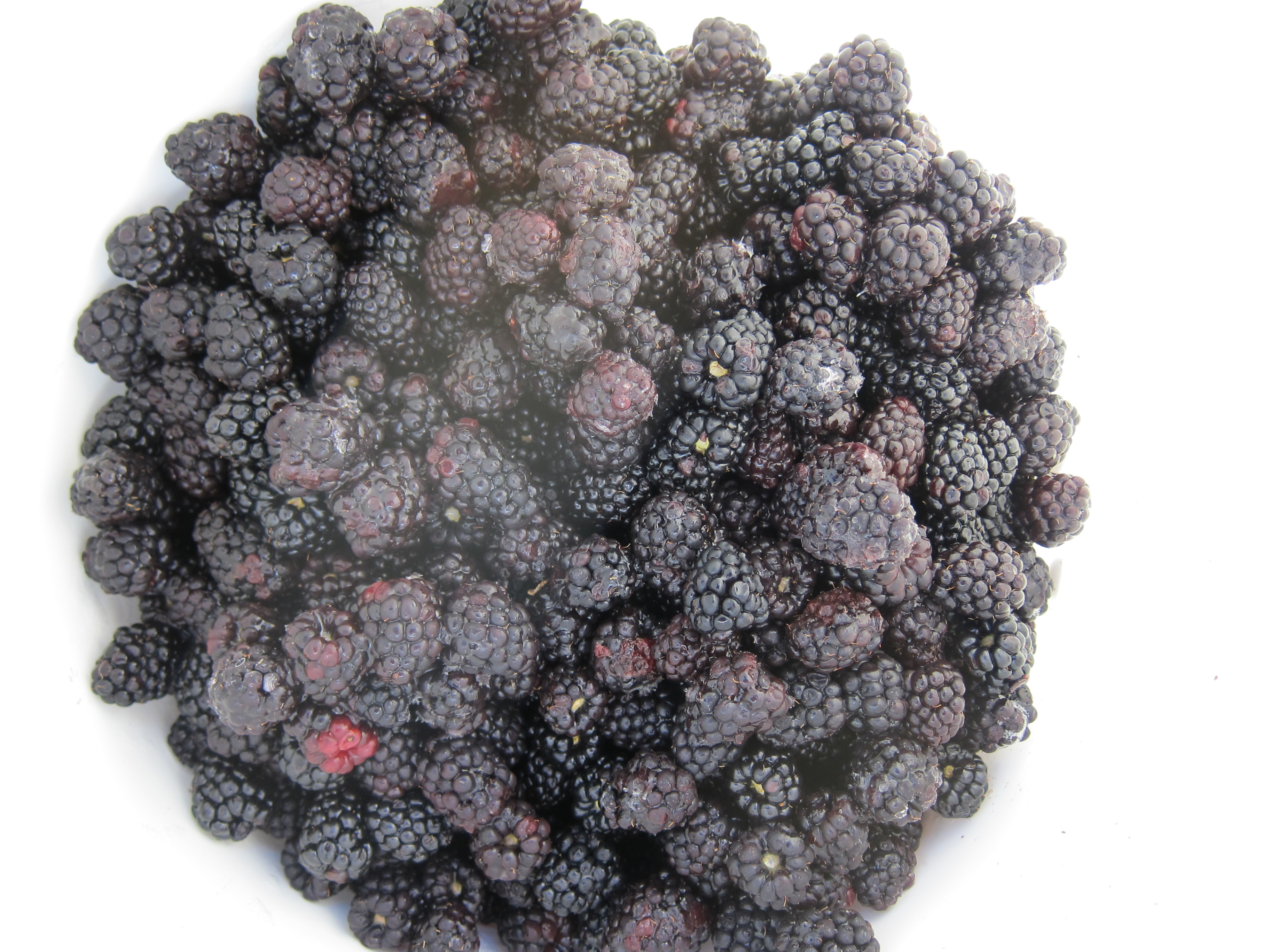
And Red Currant:
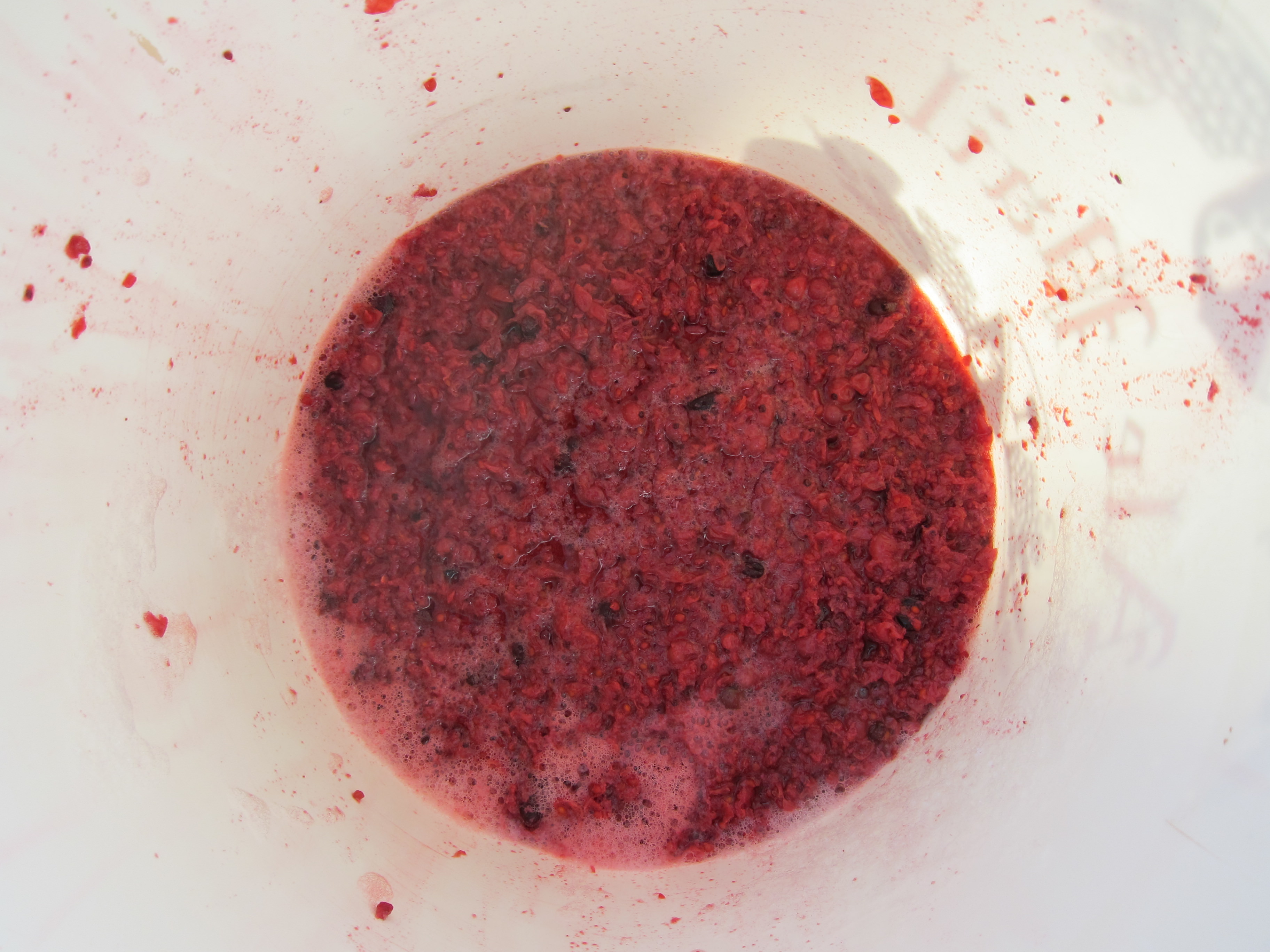

Bottled the experimental cranberry.
It went from this:

To this:

It's good but super dry. It will be fun to get some feedback on this one. I think it needs more cranberry.
Also when we picked fruit in August we had some extra so we froze them until we had some free time and fermenter space.
Blackberry:

And Red Currant:


axeman91821
Well-Known Member
- Joined
- Apr 5, 2013
- Messages
- 3,924
- Reaction score
- 7,432
Very excited that A) I have a new 8 gallon bucket so I can start doing bigger batches without worry of overflow when I'm stirring the crap out of it, and B) I have a bunch of meadowfoam honey on the way for my next batch.
Beerontwowheels
Well-Known Member
What yeast are you thinking of?Very excited that A) I have a new 8 gallon bucket so I can start doing bigger batches without worry of overflow when I'm stirring the crap out of it, and B) I have a bunch of meadowfoam honey on the way for my next batch.
axeman91821
Well-Known Member
- Joined
- Apr 5, 2013
- Messages
- 3,924
- Reaction score
- 7,432
What yeast are you thinking of?
I've only ever used 71B and it hasn't done me wrong yet.
blckout201
Well-Known Member
It's good but super dry. It will be fun to get some feedback on this one. I think it needs more cranberry.
Would be happy to lend my palate (and those of my mead drinking associates) on any of your creations. That goes for pretty much any mead makers here.
souredstouts
Well-Known Member
Hey, I went to bottle my melomel today and it is still not super clear. I have floating particles of blackberries and raspberries. Is there any reason to not use a sterile strainer like a coffee filter to filter out the floating bits at the top of the melomel?
Similar threads
- Replies
- 12
- Views
- 2K
Latest posts
-
Spike Conical Heater fails again--second in 3 years--ideas?
- Latest: Indian_villager
-
-
-
-












































![Craft A Brew - Safale BE-256 Yeast - Fermentis - Belgian Ale Dry Yeast - For Belgian & Strong Ales - Ingredients for Home Brewing - Beer Making Supplies - [3 Pack]](https://m.media-amazon.com/images/I/51bcKEwQmWL._SL500_.jpg)

